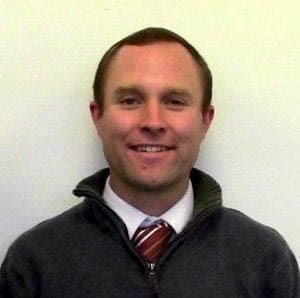This blog is part two in a four part blog series from an educator in the field, Jay Corrigan. Over the next few weeks, Jay will share how his school community has integrated the Question Formulation Technique into their classroom practice. Read part 1 here where Jay described a scaffolded approach that starts in kindergarten and extends to third grade and beyond.
by Jay Corrigan
Primary QFT: Maintaining Student Focus on the QFocus
I have a job where I deliver professional development and support to all teachers, K-12. One thing I have learned in this position is that a key instructional challenge in high school is generating energy and interest. I work with a high school government teacher who frequently talks about the challenge of getting her first period students to wake up! The challenge at the elementary level, the primary level in particular, is more focused on harnessing and focusing the energy that already exists in the classroom. This energy is part of what makes the Question Formulation Technique so exciting to use with very young children. It also means that the management of this activity can be tricky, unless you know what to do!
Hold the Line on Relevance
I was in a first and second grade classroom observing teachers using the QFT with their students. The difference in their approach, and the response of their students, illustrates something important about how to manage student behavior while they are generating questions.
In the second grade classroom, the teacher presented the class with a QFocus and the first student who volunteered asked a question whose purpose was to be silly. The teacher, believing that she needed to accept anything that was offered, wrote the silly question on the board. This class quickly degenerated into kids trying to one-up each other by asking progressively more silly and ridiculous questions.

In the first grade classroom, the teacher presented the class with a QFocus that was a picture of mealworms. The first student who volunteered asked, “Are they gross?” General giggles all around. The teacher responded by saying, “Maybe, maybe not. But our job now is to ask questions that will help us to learn about this animal. Will that question help us to learn something important about this picture?” General agreement that the answer was no. What followed was a series of complex and interesting questions, all relevant to the picture and all indicative of curiosity that these kids had about an organism they were not familiar with.
The lesson is this: There is a difference between judging and evaluating questions and holding students accountable for asking questions that are relevant. The second grade teacher did not hold her students accountable for asking relevant questions and she ended up with a list of questions that told you more about the second grade sense of humor than student curiosity about her QFocus. The first grade teacher did hold her students accountable for asking relevant questions and it made all the difference.
Hear More From the Field!
Read QFT reflections from an educator who provides professional development for older students here.
We here at the Right Question Institute also feel compelled to engage as many educators as possible in teaching this simple, but powerful strategy so that this is a teacher led, teacher implemented pedagogical revolution. We invite you learn the strategy, teach it tomorrow, and then come back and share your experience with us contact@rightquestion.org! We will be featuring a guest blog post from an educator in the field weekly on Tuesdays!
